#katherine gorge
Explore tagged Tumblr posts
Text
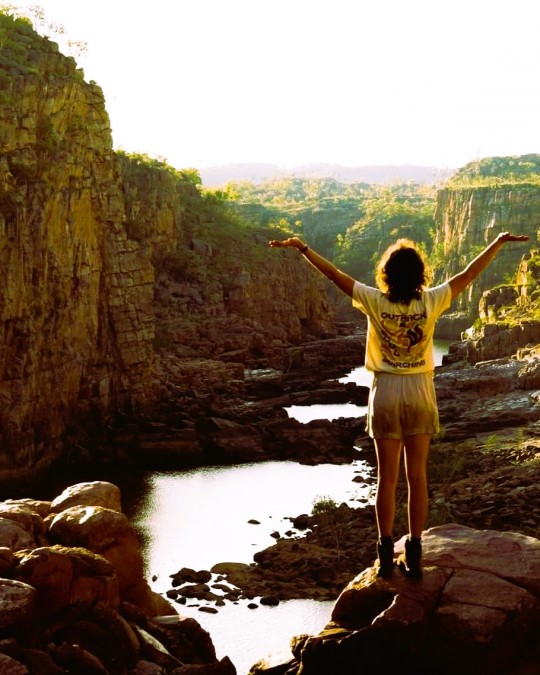
Katherine Gorge, Nitmiluk National Park, Australia: Nitmiluk National Park is in the Northern Territory of Australia, 244 km southeast of Darwin, and 23 km northeast of the town of Katherine, around a series of gorges on the Katherine River and Edith Falls. Previously named Katherine Gorge National Park, its northern edge borders Kakadu National Park. Wikipedia
#Katherine Gorge#Katherine River#Nitmiluk National Park#Nearest town Katherine#Northern Territory#Australia#oceania#oceania continent
135 notes
·
View notes
Text
A Nature Lover's Guide to Litchfield National Park
Nestled in the heart of the Northern Territory, Litchfield National Park is a haven for nature lovers, offering a stunning array of landscapes, diverse wildlife, and some of the most breathtaking natural wonders in Australia. From its towering waterfalls and crystal-clear rock pools to its lush rainforests and vast savannah woodlands, this park is a true gem for those seeking adventure and tranquility in equal measure. Whether you're a keen hiker, wildlife enthusiast, or simply someone who loves to immerse themselves in the beauty of the outdoors, Litchfield provides the perfect setting to reconnect with nature.
In this guide, we'll take you on a journey through Litchfield's must-see highlights, provide essential tips for exploring its pristine landscapes, and help you make the most of your visit to one of Australia’s most captivating national parks. Get ready to discover the magic of Litchfield—where waterfalls roar, wildlife thrives, and the natural beauty is simply awe-inspiring.
Introduction: Why Litchfield National Park is a Must-Visit Destination
Litchfield National Park, located just a short drive from Darwin in the Northern Territory, is a paradise for nature lovers seeking to immerse themselves in Australia’s wild beauty. With its diverse ecosystems, stunning waterfalls, crystal-clear swimming holes, and rich wildlife, the park offers an unforgettable outdoor experience. Unlike the more well-known Kakadu National Park, Litchfield’s relatively compact size and accessibility make it the perfect destination for day trips or weekend getaways.
The park’s natural wonders are a testament to the power and beauty of the Top End’s tropical landscape. Lush monsoon forests, ancient sandstone escarpments, and an array of spectacular waterfalls—such as Florence Falls, Wangi Falls, and Tolmer Falls—create a picture-perfect backdrop for outdoor enthusiasts. Litchfield also boasts a variety of wildlife, including colorful birds, elusive reptiles, and unique marsupials, making it an exciting destination for wildlife watchers and photographers.
What sets Litchfield apart is the sense of tranquility and closeness to nature it offers. Whether you’re hiking along scenic trails, taking a refreshing dip in one of the park’s many rockholes, or simply soaking in the serenity of the surroundings, Litchfield provides the ultimate escape from the bustle of city life. With its combination of stunning landscapes, diverse wildlife, and accessible adventure opportunities, Litchfield National Park is truly a must-visit destination for any nature lover.
Exploring Litchfield's Iconic Waterfalls
Litchfield National Park is renowned for its spectacular waterfalls, each offering a unique experience for nature lovers. From the thunderous roar of Florence Falls to the tranquil beauty of Wangi Falls, these waterfalls are some of the most iconic features of the park. Whether you’re hiking through lush rainforests, swimming in crystal-clear pools, or simply admiring the view, Litchfield’s waterfalls are a highlight of any visit.
1. Florence Falls: A Majestic Twin Waterfall Florence Falls is one of the most famous waterfalls in Litchfield, with its twin cascades spilling over a 40-meter-high cliff into a refreshing plunge pool below. Accessible via a scenic 1.6-kilometer loop trail, the hike to Florence Falls takes you through monsoon forest, offering a chance to spot vibrant bird species and the occasional wallaby. At the base of the falls, the crystal-clear waters invite visitors to swim, making it a popular spot to cool off. The surrounding rock formations and lush greenery create a serene setting that’s perfect for relaxing or capturing photos.
2. Wangi Falls: A Popular Swimming Hole Wangi Falls is one of the largest and most accessible waterfalls in the park. The falls cascade down into a large, deep swimming hole, making it a favorite spot for visitors looking to swim and unwind. A short 1.2-kilometer loop trail around the falls offers stunning views and a chance to observe the surrounding rainforest. The area around Wangi Falls is equipped with picnic tables and facilities, making it an ideal spot to enjoy a relaxing day in nature. The falls are particularly impressive during the wet season, when the water flow is at its peak, but the swimming hole is safe and inviting year-round.
3. Tolmer Falls: A Dramatic Drop into a Hidden Gorge For a more rugged and dramatic waterfall experience, Tolmer Falls offers a breathtaking view from its lookout. The falls drop over 50 meters into a deep gorge below, creating a striking sight as water plunges over the jagged cliffs. While swimming is not allowed here due to the protected species of bats that roost in the area, the Tolmer Falls Lookout offers some of the most spectacular panoramic views in the park. The short, easy walk to the lookout makes it accessible for visitors of all ages and abilities, and the viewpoint is especially mesmerizing during sunrise and sunset when the light enhances the natural beauty of the falls.
4. The Best Time to Visit While Litchfield’s waterfalls are a beautiful sight year-round, the experience varies depending on the season. The dry season (May to October) offers clear skies, warm temperatures, and perfect conditions for swimming and hiking. During the wet season (November to April), the waterfalls are at their fullest, creating a more dramatic spectacle with heavier water flows. However, it’s important to note that some trails can be slippery or closed due to rainfall, and swimming may not be as safe in the swollen pools. Regardless of when you visit, the waterfalls are sure to leave a lasting impression.
5. Photography Tips The waterfalls of Litchfield are prime spots for photography, with their dramatic falls, lush surroundings, and clear water. For the best shots, consider visiting in the early morning or late afternoon, when the lighting is softer and the crowds are thinner. If you’re photographing Florence Falls or Wangi Falls, try using a slower shutter speed to capture the motion of the water and create a soft, ethereal effect. Be sure to bring a waterproof camera or protective case if you plan to take photos while swimming or getting close to the falls.
Exploring Litchfield's iconic waterfalls is a must for any nature lover visiting the park. Each waterfall offers its own unique charm, whether you're seeking adventure, relaxation, or simply awe-inspiring views. Whether you’re hiking to a hidden viewpoint or cooling off in a rockhole, these waterfalls will leave you with memories of the incredible natural beauty that Litchfield National Park has to offer.
Hiking Trails: Discovering Litchfield's Hidden Gems on Foot
Litchfield National Park offers an array of hiking trails that provide a unique opportunity to explore the park's diverse landscapes, from lush rainforests to rugged escarpments. Whether you're a seasoned hiker or a casual walker, the park has trails that cater to all levels of experience, allowing you to discover its hidden gems at your own pace. Here are some of the best hiking trails that showcase Litchfield’s natural beauty.
1. The Buley Rockhole Loop For those looking for a relatively short and easy hike, the Buley Rockhole Loop is a fantastic option. This 1-kilometer trail meanders through monsoon forest and leads to a series of rockholes that form a natural swimming paradise. The trail is perfect for those who want to combine hiking with the chance to cool off in the crystal-clear waters. The Buley Rockholes themselves are a collection of small pools formed by cascading waterfalls, offering an idyllic setting for a refreshing swim after a short walk.
2. Florence Falls to the Buley Rockhole Trail If you're looking for a slightly longer hike with varied terrain, the Florence Falls to Buley Rockhole Trail offers a 2.5-kilometer loop that takes you through beautiful forest and along the edge of the park’s rugged escarpment. Starting at Florence Falls, the trail follows a series of steps and winding paths that offer breathtaking views over the falls. As you descend, you’ll pass through dense vegetation, before reaching the tranquil Buley Rockhole area, where you can enjoy a well-earned swim. The combination of waterfall views and swimming opportunities makes this trail a highlight of Litchfield.
3. Wangi Falls Loop Trail For a trail that immerses you in the park’s lush rainforest, the Wangi Falls Loop Trail is an excellent choice. This 1.2-kilometer circuit takes you around the base of Wangi Falls, offering stunning views of the falls and the surrounding tropical vegetation. The trail is mostly flat and easy to navigate, making it suitable for families and beginner hikers. As you walk, you’ll encounter an array of flora, including towering palms and lush ferns, and you may even spot some local wildlife, such as wallabies and colorful birds. The highlight of this trail is the opportunity to swim in the large natural pool beneath the falls, where the water is cool and inviting.
4. The Tabletop Track For experienced hikers seeking a more challenging adventure, the Tabletop Track is a must. This 39-kilometer, multi-day hike takes you across the park’s dramatic landscapes, offering expansive views of the surrounding countryside and access to some of Litchfield’s most remote and pristine environments. The track winds its way through open woodlands, wetlands, and escarpments, providing hikers with a deep sense of wilderness. Along the way, you’ll pass by secluded rockholes and hidden waterfalls, as well as gain a unique perspective of the park’s diverse ecosystems. The Tabletop Track is a challenging but rewarding hike for those seeking to experience the full scope of Litchfield’s natural beauty.
5. The Lost City and the Viewpoint Track For something a little different, the Lost City Track is a 4-kilometer trail that leads you to the fascinating "Lost City" rock formations. These sandstone pillars, shaped by millions of years of erosion, resemble a ruined city—hence the name. The trail is moderately challenging, with some steep sections and rocky terrain, but it offers incredible views of the surrounding area and the chance to explore a unique geological feature. The viewpoint at the top of the trail provides panoramic views of the park’s landscape, making it a perfect spot for a photograph.
6. Tips for Hiking in Litchfield While most of Litchfield’s trails are well-maintained and clearly marked, it's important to be prepared before embarking on any hike. Here are a few essential tips:
Wear appropriate footwear: Many of the trails are rocky and uneven, so sturdy hiking boots with good grip are recommended.
Bring plenty of water: The Top End's tropical climate can be hot and humid, especially during the dry season, so make sure to carry enough water for your hike.
Respect wildlife and flora: Stick to the designated trails and avoid disturbing wildlife or picking plants. Litchfield is home to delicate ecosystems that need to be preserved.
Pack sun protection: The sun can be intense, so wear sunscreen, a hat, and sunglasses to protect yourself from sunburn.
7. Best Time to Hike The best time to hike in Litchfield is during the dry season (May to October), when the weather is cooler and more manageable. Trails are generally more accessible, and the waterfalls are flowing at their most impressive. The wet season (November to April) brings heavy rainfall, which can make some trails slippery or impassable, but the waterfalls are often at their fullest and most dramatic.
Hiking in Litchfield National Park offers the chance to discover some of the Northern Territory's most pristine and awe-inspiring landscapes. Whether you’re exploring secluded waterfalls, spotting wildlife, or taking in breathtaking panoramic views, these trails will immerse you in the beauty of this remarkable park. With trails to suit all levels of hikers, there’s no better way to experience the natural wonders of Litchfield on foot.
Wildlife Watching: Encountering Litchfield’s Diverse Flora and Fauna
Litchfield National Park is not only a paradise for waterfall enthusiasts and hikers but also a prime destination for wildlife lovers. The park’s diverse ecosystems, from monsoon forests and woodlands to wetlands and rocky outcrops, are home to a wide variety of flora and fauna. Whether you're an avid birdwatcher, a reptile enthusiast, or simply someone who enjoys observing nature in its purest form, Litchfield offers a wealth of wildlife experiences.
1. Birds of Litchfield: A Birdwatcher's Paradise Litchfield National Park is a haven for birdwatching, with over 200 species of birds recorded in the park. Early mornings or late afternoons provide the best opportunities to spot a variety of avian species as they come out to feed or roost. Among the highlights are the striking red-tailed black cockatoo, often seen flying overhead, and the colorful rainbow bee-eater, which flits around the park’s open woodlands. White-bellied sea eagles are commonly spotted soaring above the park’s wetlands, while woodswallows and finches thrive in the more secluded areas.
For those particularly keen on spotting rare species, the northern rosella and the mangrove kingfisher are unique to the region and can be found in the park’s tropical habitats. The diversity of birdlife in Litchfield makes it a must-visit destination for any birdwatcher.
2. Reptiles and Amphibians: Litchfield’s Scaly Residents Litchfield is home to a wide range of reptiles, from large monitor lizards to the elusive Frill-necked lizard, known for the distinctive frill around its neck that it displays when threatened. The blue-tongue skink, with its signature blue tongue, is another common sight on the park’s trails, often sunning itself on the rocks or basking in the heat. Look carefully along the park’s roads and trails, and you may spot geckos, goannas, and even the occasional sand monitor.
In addition to reptiles, Litchfield is home to a variety of amphibians. The green tree frog is one of the park’s most recognizable amphibians, often found near the park’s waterholes and wetlands. During the wet season, the sound of croaking frogs fills the air, as many species breed in the temporary pools of water created by the rain.
3. Mammals: Rare Encounters with Litchfield’s Residents While Litchfield is better known for its birds and reptiles, it also hosts a surprising number of mammals, some of which are elusive and rarely seen. The park is home to several species of marsupials, including the northern brushtail possum, black-footed rock wallaby, and tree kangaroo. These mammals tend to be nocturnal, so early morning or evening hikes increase your chances of spotting them.
The park is also known for its bats, particularly the orange leaf-nosed bat, which roosts in the crevices of the park’s sandstone cliffs, like those found at Tolmer Falls. While the bats may be hard to spot during the day, their presence can be observed in the caves and rocky outcrops where they hang upside down in large colonies.
4. Insects: Litchfield’s Colorful and Intricate Insects Litchfield’s warmer climate and diverse vegetation make it a great place to observe a wide variety of insects. The park’s tropical ecosystems support a rich array of butterflies, beetles, and dragonflies, with the blue tiger butterfly and citrus swallowtail being common sights. The brightly colored green tree ant is another fascinating insect to watch as it scurries along the trails. In the wetter months, you may also come across swarm ants and other interesting species that thrive in the humidity.
For those interested in observing the relationship between plants and insects, Litchfield’s native flora plays a crucial role in supporting pollinators like bees and butterflies. These insects are not only important for the ecosystem but also provide excellent opportunities for nature photographers to capture their intricate beauty.
5. Best Wildlife Watching Spots For the best wildlife encounters, consider heading to these prime locations within Litchfield:
Buley Rockhole: This serene spot is perfect for birdwatching, with various species of birds frequenting the area. You may also spot reptiles and small mammals while you relax by the water.
Wangi Falls: The surrounding rainforest is home to a wealth of wildlife, including wallabies, frogs, and a variety of birds. The area is particularly lively in the early morning and late afternoon.
Tolmer Falls: While the waterfall is the main attraction, the surrounding rock cliffs and caves are ideal spots to observe bats and other hidden wildlife.
The Lost City: The unique rock formations in this area provide a habitat for lizards and other reptiles, as well as an excellent opportunity for birdwatching.
6. Tips for Wildlife Watching in Litchfield To make the most of your wildlife watching experience in Litchfield, keep these tips in mind:
Stay quiet and patient: Many animals in Litchfield are shy and will flee if they hear sudden movements or loud noises. Move slowly and quietly for the best chances of spotting wildlife.
Bring binoculars and a camera: For birdwatchers, binoculars are essential for getting a closer look at the park’s avian residents. A camera with a zoom lens will also help you capture detailed images of animals from a distance.
Respect wildlife: Always maintain a safe distance from wildlife, particularly reptiles and mammals. Avoid feeding animals or disturbing their natural behaviors.
Wear long sleeves and insect repellent: The park’s tropical climate means insects like mosquitoes and ants are prevalent, so make sure you protect yourself from bites while exploring.
Litchfield National Park is a treasure trove of wildlife, offering nature lovers the chance to encounter a diverse range of animals in their natural habitats. Whether you're spotting birds in the treetops, tracking reptiles along the trails, or observing mammals at dusk, Litchfield promises a rewarding wildlife watching experience that showcases the beauty and richness of Australia’s Top End ecosystems.
Swimming and Relaxation: Cool Off in Litchfield’s Natural Rockholes
Litchfield National Park is not only a haven for wildlife, waterfalls, and hiking but also offers a refreshing retreat with its stunning natural rockholes. These crystal-clear swimming holes, formed by the park’s cascading waterfalls and flowing streams, provide the perfect opportunity to cool off, relax, and immerse yourself in nature. Whether you're seeking a peaceful spot to unwind or an exciting location to swim, Litchfield’s rockholes offer an unforgettable experience for nature lovers and adventure seekers alike.
1. Buley Rockhole: A Serene Oasis One of the most popular and accessible swimming spots in Litchfield, Buley Rockhole is a series of natural plunge pools fed by cascading water. Located near the park’s entrance, it’s an ideal place to relax after a day of hiking or sightseeing. The pools vary in size, allowing swimmers to choose their own level of adventure. Some areas are perfect for lounging, while others feature small waterfalls and gentle currents, making it a fun spot for families and those looking to take a refreshing dip.
The surrounding monsoon forest and lush vegetation create a serene and tranquil atmosphere, perfect for lounging by the water and soaking in the beauty of the natural surroundings. The shallow pools are also great for children, offering a safe and enjoyable spot for younger visitors to enjoy a swim.
2. Wangi Falls: A Large Swimming Hole with a Scenic Backdrop Wangi Falls is one of the most iconic and accessible spots for swimming in Litchfield. The large, deep pool at the base of the falls invites visitors to take a plunge, surrounded by towering rock walls and dense rainforest. The view of the water cascading down the rocks into the pool creates a stunning backdrop for swimmers. This picturesque location is perfect for both relaxation and swimming, making it a favorite for nature lovers.
In addition to its beauty, Wangi Falls offers several amenities, including a picnic area, making it an ideal spot for a day trip. While the water is inviting throughout the year, it is particularly spectacular during the wet season when the falls are at their fullest, offering an even more dramatic experience.
3. Florence Falls: A Scenic Waterfall and Swimming Spot Florence Falls offers another opportunity to swim in Litchfield’s pristine waters. The falls plunge 40 meters into a refreshing pool, creating a stunning and serene location for a swim. The surrounding lush forest and the impressive rock formations make Florence Falls a magical place to relax and enjoy nature. The 1.6-kilometer loop trail to the falls allows visitors to appreciate the natural beauty of the park, and once at the base, the cool waters of the plunge pool provide the perfect way to cool off.
The natural beauty and peaceful setting make Florence Falls a favorite spot for those looking to unwind and reconnect with nature. The area also features a lookout point for those who prefer to stay dry while taking in the view of the falls from above.
4. Tolmer Falls: Spectacular Views, No Swimming While Tolmer Falls is one of Litchfield’s most breathtaking waterfalls, swimming is not permitted here due to the presence of a protected bat colony in the surrounding caves. However, the falls’ dramatic 50-meter drop into a deep gorge offers spectacular views, making it a worthwhile stop for those looking to enjoy the beauty of the park from the lookout.
Though swimming isn’t allowed, Tolmer Falls is still a must-see destination for nature lovers. The lookout provides panoramic views of the surrounding landscape, and visitors can enjoy a peaceful moment taking in the awe-inspiring scenery.
5. Safety and Swimming Tips While swimming in Litchfield’s rockholes is a fantastic way to experience the park, it’s important to keep safety in mind:
Check for current conditions: Always check the safety of swimming holes before entering. Heavy rains or strong currents may affect water conditions.
Avoid jumping or diving: Rocks and shallow areas may be hidden under the water, so it’s important to avoid jumping or diving.
Be aware of wildlife: Although the swimming areas are safe, some creatures such as crocodiles, especially during the wet season, may inhabit nearby waters. Always swim in designated safe areas and follow park guidelines.
Bring essentials: Remember to bring sunscreen, a hat, and water shoes for comfort and protection while swimming or relaxing around the rockholes.
6. The Best Time to Swim The best time to visit Litchfield’s rockholes for swimming is during the dry season, from May to October, when the weather is warm, the waterfalls are flowing, and the conditions are ideal for outdoor activities. The wet season (November to April) can bring stronger currents, more mosquitoes, and some trail closures, making it less ideal for certain activities, though the waterfalls are at their most spectacular during this time.
Swimming in Litchfield’s natural rockholes offers the perfect combination of adventure, relaxation, and connection with nature. Whether you're cooling off after a hike or simply soaking in the beauty of your surroundings, these tranquil waters provide an experience that is quintessentially Litchfield—a perfect way to enjoy the stunning landscapes and serenity of the Northern Territory.
Essential Tips for Your Visit to Litchfield National Park
Litchfield National Park is a stunning destination for nature lovers, offering a mix of breathtaking waterfalls, diverse wildlife, and scenic hiking trails. To ensure you have the best possible experience while exploring the park, here are some essential tips to help you plan your visit and make the most of your time in this natural wonderland.
1. Plan for the Best Time to Visit The ideal time to visit Litchfield National Park is during the dry season, which typically runs from May to October. During this time, the weather is cooler and more comfortable for outdoor activities, and the park’s waterfalls are still flowing from the earlier wet season rains. This is also the best time for hiking and wildlife watching. The wet season, from November to April, brings heavy rains that can cause certain trails to be closed or become slippery. However, the wet season can offer dramatic waterfall views as they are at their fullest.
2. Wear Comfortable Clothing and Footwear When visiting Litchfield, it's important to wear lightweight, breathable clothing suitable for tropical conditions. Make sure to bring sturdy, comfortable hiking shoes, as many of the trails are rocky, uneven, and may involve some climbing or descending steps. For water activities, pack a swimsuit and water shoes to protect your feet in rocky pools or waterfalls. A hat, sunglasses, and lightweight long sleeves or pants can help protect you from the sun and insects.
3. Stay Hydrated and Pack Essentials The Top End's tropical climate can be hot and humid, so it’s crucial to stay hydrated while exploring the park. Always carry plenty of water with you, especially if you’re heading out on one of the more remote hiking trails. Along with water, consider bringing some high-energy snacks, sunscreen, insect repellent, and a first aid kit. A camera and binoculars are also recommended for wildlife watching, as Litchfield is home to a variety of unique flora and fauna.
4. Respect the Wildlife and Environment Litchfield National Park is home to a wide array of wildlife, including birds, reptiles, and mammals. While exploring, remember to observe wildlife from a distance without disturbing their natural behavior. Never feed animals, as it can disrupt their diets and lead to dangerous interactions. Stick to designated trails and rockholes to protect the delicate ecosystems, and refrain from picking plants or disturbing natural habitats.
5. Be Mindful of Safety Around Waterfalls Litchfield is famous for its spectacular waterfalls, but it’s important to prioritize safety when swimming in or near the water. Always swim only in designated safe areas, as some spots may be off-limits due to strong currents or crocodile habitats. Be cautious near cliff edges or slippery rocks, and avoid jumping or diving into the water. It’s also wise to check for any safety warnings posted by park authorities before entering any waterholes.
6. Prepare for Limited Facilities While Litchfield National Park offers basic facilities like picnic areas, restrooms, and campgrounds, services within the park are limited. Make sure to stock up on essentials like food, water, and fuel before entering the park, as there are few shops or services within the park itself. There are a few campgrounds if you're planning to stay overnight, but it's a good idea to book your campsite in advance, especially during the peak tourist season.
7. Respect the Weather and Plan for Changing Conditions Litchfield's weather can change quickly, especially during the wet season, so be prepared for sudden rain showers and temperature shifts. Always check the weather forecast before heading out, and be flexible with your plans if conditions change. If you're hiking, ensure you have a waterproof jacket or poncho to stay dry, and keep an eye on trail conditions, as some may become slippery during or after rain.
8. Embrace the Park's Eco-Friendly Policies Litchfield National Park is a protected area, and visitors are encouraged to follow the park’s eco-friendly policies. Dispose of all trash responsibly by using the bins provided, and try to leave no trace of your visit. If you're camping, follow the Leave No Trace principles, which include staying on established campsites, using biodegradable soaps, and minimizing your environmental impact.
9. Use the Park’s Facilities for Your Convenience Litchfield offers several facilities that make your visit more comfortable, such as information centers and well-marked walking tracks. Stop by the visitor center upon arrival to pick up maps and get the latest updates on trail conditions, safety alerts, and any closures. Some trails and rockholes can be quite remote, so having a map or GPS device is always a good idea to ensure you stay on track.
10. Consider Guided Tours for a Deeper Experience If you want to gain more insight into the park’s history, ecology, and wildlife, consider joining a guided tour. Local guides are often available for wildlife watching, bushwalking, or photography tours, and they can provide a wealth of knowledge about the park’s unique features. A guided tour can also enhance your experience by taking you to hidden gems and areas that might be hard to find on your own.
By following these tips and preparing adequately for your visit, you’ll be able to enjoy all the natural beauty Litchfield National Park has to offer while ensuring your safety and respecting the environment. Whether you're hiking, swimming, or wildlife watching, Litchfield promises a truly memorable experience for all nature enthusiasts.
Conclusion
Litchfield National Park is a must-visit destination for nature lovers, offering a unique blend of natural beauty, adventure, and tranquility. With its iconic waterfalls, diverse wildlife, scenic hiking trails, and inviting rockholes, the park provides endless opportunities for exploration and relaxation. Whether you’re drawn to the stunning views of Wangi and Florence Falls, the serenity of Buley Rockhole, or the chance to spot unique flora and fauna, Litchfield is a place where nature’s wonders come alive.
By planning ahead, respecting the environment, and immersing yourself in the park’s unspoiled landscapes, you can make the most of your visit to this Northern Territory gem. Whether you're a seasoned adventurer or simply seeking a peaceful retreat in nature, Litchfield National Park offers something for everyone. Pack your gear, leave your worries behind, and let the beauty of Litchfield leave a lasting impression on your soul.
#kakadu tour#kakadu tours from darwin#kakadu national park tours#2 day kakadu tours from darwin#yellow water cruise kakadu#kakadu national park tours from darwin#kakadu trips#yellow river cruise kakadu#kakadu tours and travel#jim jim falls tours kakadu#litchfield np#katherine gorge#eco-friendly tours#aboriginal cultural experiences#indigenous heritage tours#outback adventure safaris#environmental conservation tours
0 notes
Text
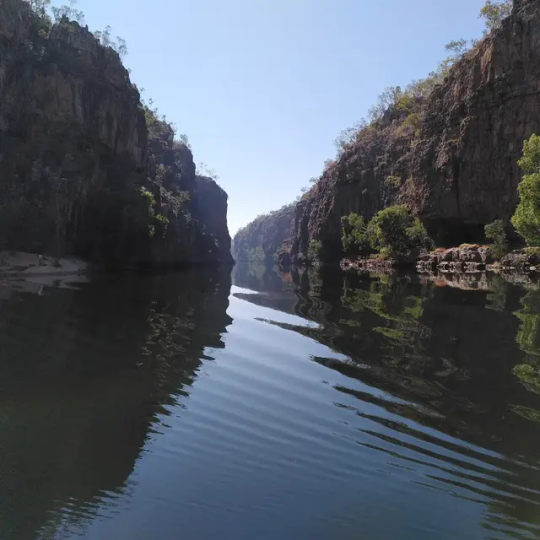
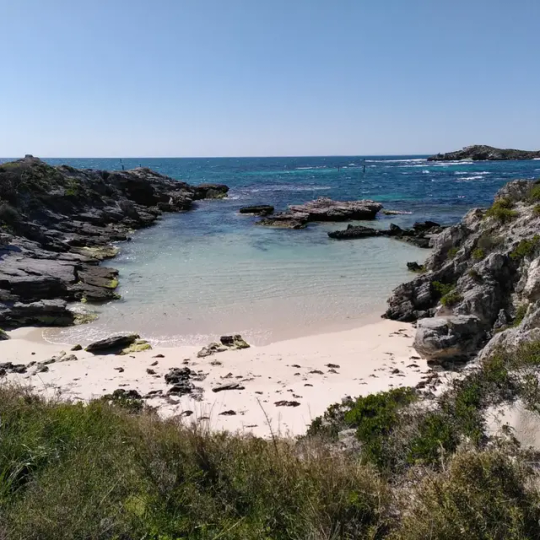
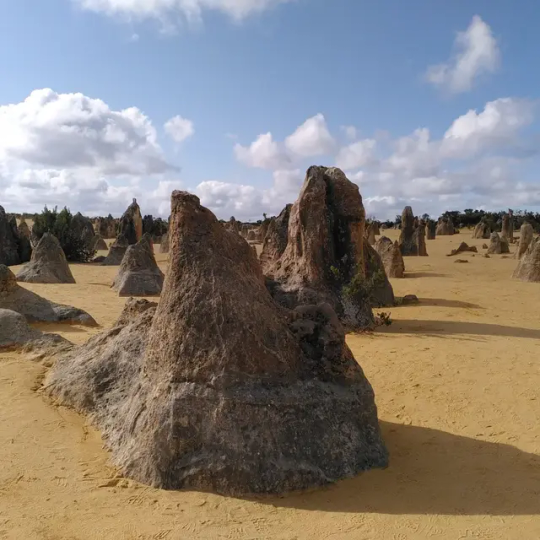
Katherine Gorge (Nitmiluk National Park) // Rott Nest Island // the Pinnacles
#australia#rott nest island#pinnacles#nitmiluk#katherine gorge#Katherine australia#western Australia#northern territory#travel#beach#ocean
1 note
·
View note
Text


CELEBRITY JUICE 26.10 — Katherine Ryan
#i love her big beautiful hair in this she looks gorg#celebrity juice#katherine ryan#panel show#gifs#mine#mine:juice#juice 26.10#dailywomen#femaledaily#userladiesblr#femalegifsource
53 notes
·
View notes
Text
random thought bc I've been listening to Six on repeat: the queens claim that the only reason they're remembered is because of Henry, but would Henry be one of the most iconic and well-known English monarchs if not for them?
#like his defining trait is sorta 'bloke who had six wives who he treated pretty badly all told' plus the whole church of england thing#which arguably would have happened anyway in some sense since protestantism was sweeping europe but is generally credited to him wanting#a divorce whether thats accurate or not#yes he was quite charismatic etc but there were plenty of others who were too or at least interesting#like nobody talks about the guy who was Probably murdered in a framed hunting accident#or the one who was executed by having a red hot poker rammed up his arse#or the one who dies after gorging himself on strawberries and eel pie iirc#ok fine maybe i only remember the memorable daeths but you get the point#the six wives are what made henry viii significant is what i'm saying#via shitposts#six#six the musical#tudors#tudor queens#catherine of aragon#anne boleyn#jane seymour#anne of cleves#katherine howard#catherine parr#henry viii
313 notes
·
View notes
Text

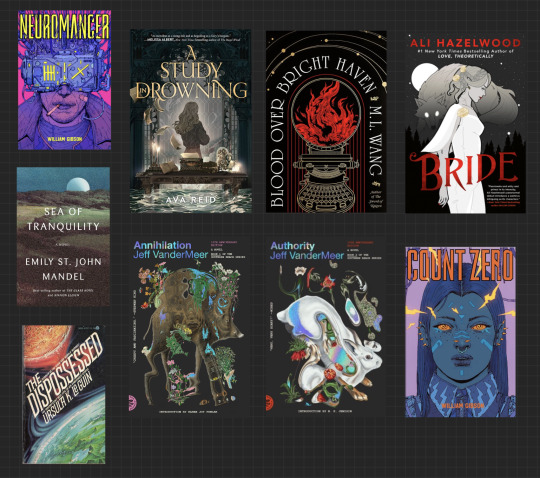
theres a couple of books missing from here bc they didnt tile nicely but kicks my legs... reading log so far from the first half of 2024 🫡
i wanted to share my favourites out of the above as well:
carmilla by sheridan le fanu (the og vampire novella, somewhat archaic writing style but Way more lesbian than i was expecting, v evocative of those insane girlhood friendships one has growing up afab)
the goblin emperor by katherine addison (maia… the ultimate good boy truly trying his best to be a good ruler - i felt alternatively so bad for him and rly proud of the sentiment of kindness he embodied + gorg descriptions of the goblin/elf cultures)
empress of salt and fortune by nghi vo (novella; gorgeous poetic writing, like catching glimpses of an epic fantasy story but being Allowed to fill in a ton of it yourself.. rly tactile…also WAMEN and a sprinkle of lesbianism 🤌)
white is for witching by helen oyeyemi (magical realism prose which powerfully serves the unreliable narrator/psychological issues the protagonist has/seems to have + haunted house horror where the house is also in the characters after they leave.. i rly want to reread it already)
the dispossessed by ursula k le guin (anarchist socialist anticapitalist anti-prison anti-police theory beamed straight into my brain. made me want to move to the moon. actually nuanced in its depiction of issues in supposedly utopian societies)
annihilation by jeff vandermeer (delicious bio-horror.. weirdness abounds… really vivid pov/protagonist in the autistic broad shouldered biologist, imo very well crafted mystery but dont go in expecting to have all the answers at the end, thats Not The Point tm)
blood over bright haven by ML wang (sciona.... ur THE power hungry maniac academic ive been waiting for... this is a visceral fantasy that quite skillfully deals w gender & ethnic oppression w.o cheapening those issues for the (lowkey) romance's sake, a common gripe for me)
bride by ali hazelwood (just a freaking good time if uve been traumatized by abusive male leads ur supposed to like.. werewolf x vampire contemporary romance)
718 notes
·
View notes
Text
people i’d like to know better!
tagged by the wonderful @glindalesbian (which btw CONGRATS that’s so awesome i hope you have a wonderful day on saturday!!!!)
last song: unbelievers by vampire weekend :)
favorite color: pink! like a salmony color probably, it’s just so pretty :) and when you see it in nature ???? gorge.
last book: early morning riser by katherine heiny!! i took it off the shelf because it shared the name of a song i LOVED back a few summers ago (and it’s still such a summer song for me) but then. it’s so small town gossip and has some WONDERFUL characters who are so real. and some wonderful characters who are so confusing (just one really. his name is gary and i’m a bit obsessed with him he’s the worst. i love him). and i read it aloud to my roommate so we could enjoy the gossip together :)
last tv show: drag race!!!!!! the most recent s17 episode!!!!! i finally got to watch an episode live for the first time since the one with rock n roll suzie and i was delighted even though it was a disappointing elim
sweet/savory/spicy: savoryyyy all the way. i’ve never really been a sweets person and i only really care for spice in conjunction with savory so it’s the clear winner for me
last thing i googled: um. let me check okay it was what does cctv stand for. the answer is closed-circuit television (not that i know all too much about what that entails but it makes sense. and now i know)
looking forward to: having a nice break this summer!!!
current obsession: i think i’m too busy for an obsession unfortunately but i’m really enjoying the season :) and my shitty mobile game i love her too
i’d love to hear from you !!! @stylesuperstar @suzieteassss @junosjukebox @adoordelano @puppywritesthings @rag3-n-lov3 @hannahlovesdance07 @jinkxie
#can you tell i finished the book today#it was so FUN i wish there was more gary content in it hes such a failure and barely a person and so inadequate it’s incredible#anyways. tag games are so fun :)#tag games!
10 notes
·
View notes
Note
If Argo ever became a victim and the team had to solve his death, how would his case roughly play out? What would be the events that happen between chapters, and what would the AI be?
Nolan already has one in the works lol
Personally thinking of him being killed in a alleyway by a thug or someone, or maybe even die at Lawson’s own hands and the team had to figure out whether it really was Lawson, or someone else
If I had a nickel for every time I was asked how I would kill Argo off, I'd have two nickels - which isn't a lot, but it's weird that it happened twice!
I'm sorry I took so long to respond to this ask. I was waiting until I posted a specific chapter ("If You Love Somebody, Let Them Go") in my story before answering it. I needed it to reveal a significant change I’m making to Argo’s story, which plays a part in this answer.
Now that I’ve done that and thought out how to write this hypothetical case let’s see one way I could potentially kill Argo! I’m going to lay it out similar to how I plot out my OG cases in my notebook. (Yes, I have a notebook for OG cases, and yes, it's OCD-level organized to the point that it’s colour-coded by season.)
Info for this case before getting into it:
This murder substitutes the final case. Someone once asked me in an OG case I made for S3 (“Murder From The Past”) if I would kill off Argo in the final case instead of Charlie (I hadn’t even introduced Argo yet, and people already wanted to know if I would kill him or not!). So you’ll see that some things from Last Stand For Justice will be reused for this OG case
Argo and Diego have gotten back together (Argo and Jason broke up during Coyote Gorge) and have been romantically involved since the start of Crimson Banks
For the sake of parts of this case, we'll say that the Squad was already aware that Argo and Diego aren't human (Not sure if they’ll find out in my story or not yet)
The transition between this and the case before it is similar to canon, but instead of Charlie returning to the airship, it’s Argo, and Isaac goes with him
Since Maddie just gave birth and her husband isn't missing, instead of her going to the airship, it’s Arthur with Katherine (who escaped with the Squad during “Best Laid Plans”) tagging along since she knows how to avoid the Justice Corps thanks to the Resistance. That’s how they end up as the investigators
Case Outline
Title: Sinking Justice (Alternative to Last Stand For Justice)
Season: 4
Between cases: N/A - final case
District: Capitol Peak
Partners: Arthur Wright & Katherine Woolf
Summary
Victim: Argo Acquafredda
Murder Weapon: Handgun
(Shot in the heart; heart removed post-mortem)
Killer: Diego del Lobo (Justin Lawson)
Suspects
Diego del Lobo (Profile pieces: 1, 2, 3, 4, 5)
Constable Ramirez (Profile pieces: 1, 3, 5)
Isaac Bontemps (Profile pieces: 1, 2, 3, 5)
Jason Nicchi (Profile pieces: 1, 2, 4)
Maddie O’Malley (Profile pieces: 1, 2, 3, 4)
Quasi-Suspects
Dora Umbright
Lady Highmore
Evie Holloway
Killer’s Profile
The killer eats ration biscuits (Argo’s body)
The killer knows The Caesar Cipher (message delivered by Caspian)
The killer uses moisturizer (Caspian)
The killer has torn clothes (bullet)
The killer has brown eyes (Argo’s necklace)
Crime Scenes/Clues
Airship Navigation room
Victim’s body
Talk to Isaac (no clue needed)
Police notebook (Constable Ramirez)
Squad Airship
Baby bag (Maddie)
Caspian’s letterholder
Capitol Peak Harbour
Flying Squad badge (Diego)
Newspaper article (Isaac)
Caspian
Airship Gangway
Argo’s crutches (Constable Ramirez)
Toolbox (Jason)
Harbour Dock
Engagement ring (Diego)
Fiocco Nascita (Maddie)
Gun (Jason)
Airship wheel
Argo’s necklace
Ship’s wheel
Disclaimer: The order of steps varies; this is just a rough outline of what would happen in each chapter
Steps - Chapter 1
Investigate Airship Navigation room:
Victim’s body (autopsy - Dick)
Police notebook (faded name on the cover; decipher name; Constable Ramirez. New suspect: Constable Ramirez)
Talk to Isaac about the murder (admits he and Argo got separated on the way to the airship, and when he arrived, Argo was already dead)
Talk to Ramirez about being on the crime scene (reveals the Justice Corps tasked him to guard the airship after the Squad escaped but had stepped away for a snack break during the time of the murder, and he never saw Argo enter the airship)
****New Crime scene: Squad Airship (Prerequisite: talk to Ramirez)
Investigate Squad Airship:
Bag (Search; baby supplies; note addressed to Maddie. New suspect: Maddie O’Malley)
Caspian’s letter carrier (Unlock; Coded message; analyze - Evie)
Talk to Maddie about the baby bag (discover she asked for Argo to grab the bag of baby items she had to leave behind on the airship when they fled. Maddie is shocked to find out Argo is dead, and Charlie comforts)
Get results: Autpsoy and coded message
Autopsy revealed: killer eats ration biscuits; left crumbs on Argo’s body
Code message revealed: killer knows The Caesar Cipher; coded message was from Argo to his killer asking him to meet him at the airship
****Chapter transition: Charlie interrupts Arthur and Katherine, who were summarizing the case, to announce he’d just received a telegram from a Resistance member informing them that Argo had been spotted at the harbour before his death
Steps - Chapter 2
Investigate Capitol Peak Harbour:
Flying Squad badge (faded engraving; dust; badge number; Arthur IDs it as Diego’s badge number (there are less than ten members; I doubt that many badges have been issued that Arthur doesn't know which belongs to who). New suspect: Diego del Lobo)
Torn newspaper article (Repair; old article about Isaac’s brother’s death. Talk to Isaac again)
Damaged Caspian; substance on wings (Swab wings; unknown transparent substance; analyze - Viola)
Inform Diego of Argo’s death (Reveals he visited the airship after hearing the Squad had been captured; assumes he must have dropped his badge on the way there as he carries it to remind himself there is still hope true justice will be restored. After being told Argo is dead, Diego becomes distraught and is unconsolable hearing his lover is dead)
Talk to Isaac about the newspaper article (Same as canon; it reveals the truth behind his brother’s death and how Argo found the article, causing the old memories to resurface)
Get results: Unknown substance
Reveals the killer uses moisturizer as it was the unknown substance on Caspian’s wing, but it was not the type Argo used, so it had to have been left by the killer. Viola speculates the killer must have attacked Caspian during the murder and brought the bird to the harbour to dispose of him in the water
Investigate airship gangway:
Argo’s crutches with crumbs on them (Collect with vacuum; unknown crumbs; analyze - Viola)
Toolbox (Search; ID band; compare; Jason’s ID code. New Suspect: Jason Nicchi)
Talk to Jason about his toolbox being on the crime scene (Learn that Mayor Lawson tasked him with checking the airship for traps the Squad could have set. Knew nothing about the murder and was shocked Argo was dead)
Get results: Crumbs
Crumbs belonged to trail mix. Katherine recalls that was the snack Constable Ramirez had mentioned eating
Ask Constable Ramirez about why he handled Argo’s crutches (Confesses he went aboard the airship after the murder and found Argo’s body, dropping trail mix on the crutches after seeing the dead detective. Panicked and ran out of the airship, taking the crutches since his trail mix was on them and hiding them outside to avoid becoming a suspect)
****Chapter transition: Same as in canon; Lady Highmore tells everyone to hide because Judge Umbright is coming, so Arthur and Katherine leave the mansion to search the harbour again
Steps - Chapter 3
Investigate Capitol Peak Harbour Docks:
Locked ring box (Decode lock: open; engagement ring with engraving “Mi Corazón Es Tuyo - Tu Lobo”. Talk to Diego again)
Torn fabric (Repair; Fiocco Nascita with George Dupont’s name and birth info. Talk to Maddie again)
Trash can (Search; Gun; analyze - Rose)
Question Diego about the engagement ring for Argo (Reveals he was going to ask Argo to marry them (even if it was just a symbolic marriage) after the fall of the Justice Corps)
Ask Maddie about George’s Fiocco Nascita (Tells them that Argo made the Fiocco Nascita for George and that she regrets asking Argo to find her baby bag, thinking she caused him to spend unnecessary time on the airship, which allowed his killer to get him)
Get results: Handgun
Discover the gun is the murder weapon. Rose also discovers that these guns are used by the Justice Corps and are manufactured by Jason. Talk to Jason again)
Confront Jason about building the murder weapon (Is shocked to find out he made the gun that killed Argo but promises he did nothing more than build the guns on Mayor Lawson’s orders. He doesn't know who the gun was issued to)
Investigate Airship wheel:
Argo’s necklace with substance on shell (Collect; transparent substance; analyze - Viola)
Broken ship’s wheel (Repair; restored ship’s wheel; analyze - Charlie)
Get results: Substance and ship’s wheel
Transparent substance: Killer’s tears: reveals the killer has brown eyes
Ship’s wheel: Fibres caught in the wheel: reveals the killer has torn clothes as the fibres did not match Argo’s clothes
Arrest Killer: Diego del Lobo (Or is he???)
Diego confesses that Argo has asked to meet him at the airship as they had been secretly communicating about how to take down Justin. No one was around when they arrived, so they were going to grab what they needed and then flee to join the rest of the Squad at Lady Highmore’s mansion
But Justin appeared and caught them sharing a kiss in the navigation room. Furious, Justin demands to know why Diego (still wearing his Eddie Lebold disguise) was kissing a wanted man
Diego’s real identity is discovered, and Justin draws his gun, planning to take Diego and Argo in himself. The couple pleads for Justin to put the gun away and promise to go with him willingly, but Justin keeps ranting about “perfecting justice” and “ridding the world of corruption” while brandishing the gun
During the argument, Justin shoots at Diego, but Argo steps in front of his boyfriend and takes the bullet meant for Diego. The two stumble backwards into the airship’s wheel, breaking it and collapsing to the floor
Diego is distraught as he holds Argo while he’s dying, and Justin, shocked by what he’d done, leaves without trying to take Diego in
Argo dies in Diego’s arms and asks his boyfriend to take his heart (The Heart of The Ocean; long story short, magical rock that serves as Argo’s heart) so it won’t fall into the wrong hands before he passes
Diego does as requested and takes Argo’s heart; somehow, Argo’s body sustains a physical form. Diego assumes it might have something to do with the fact that the stone is cracked because of the bullet, and thus, the magic is on the fritz
Diego hid the heart in a safe location to retrieve it after Justin was taken down. But Arthur and Katherine caught Diego before he could find evidence to prove Justin killed Argo since Diego didn’t think they would just take his word for it
Thankfully, they believed him, and while they still kept Diego locked in a bedroom, the Squad now focuses their efforts on taking down Justin and getting justice for Argo
****Chapter transition: After Diego’s “arrest,” Maddie appears to reveal George has been taken by Judge Umbright like in canon (but happens late in this case), and now they have to save the baby and take down Justin
Steps - Chapter 4/Additional Investigation
****Following the introduction of the AI, we need to talk to Rose about George’s kidnapping and Diego about defeating Justin
****Maddie and Charlie stand in as partners for the George plotline
****Isaac and Arthur partner for the Justin plotline
Rescuing George Dupont plotline:
Talk to Rose and find out about her plan to save George
Investigate the Navigation room
Baby box (Unlock; baby rattle; analyze - Rose)
Get results: Weaponized rattle
Rescue George Dupont from Judge Umbright using the weaponized rattle
Defeating Justin Lawson plotline:
Ask Diego about his and Argo's plan to take down Lawson (Charlie still made the tracking device but was less involved in the “True Justice” plan since Argo takes his place in this case)
Investigate Squad Airship
Broken pieces (Repair; tracking device; analyze - Charlie)
Get results: Tracking Device
Canon results about how we need to wait until Justin stops moving to catch him
Timeskip happens - Charlie reports that Justin has stopped at the Capitol Peak harbour
Investigate Capitol Peak Harbour
Tracking device
The battle between Justin and the Squad happens like in canon, but he confesses to killing Argo. However, he no longer feels guilty since Argo was “against justice” and disobeyed Justin
Justin shoots Isaac, but the bulletproof vest saves him, and while Justin is distracted, Arthur shoots the mayor in the heart, killing him
Since they are at the harbour and Justin is standing close to the edge of the dock, he falls into the water, but by the time Arthur and Isaac reach the dock’s edge, his body is carried away by the waves and is never recovered. It was lost at sea forever, never to have a proper final resting place
(It was the ocean’s revenge for Justin killing her heart. His soul can never truly be at peace)
Everyone regroups following Justin’s death. Diego is released now that Argo’s true killer is gone, and he’s officially cleared of the murder despite taking Argo’s heart (since the Squad knows Argo isn’t human, they understand why Diego did it and therefore, he isn’t charged for any crime)
The plot continues as usual, with Lady Highmore becoming the new mayor, followed by Argo's funeral. His body was cremated, and his ashes were scattered at sea at the cove behind his house
Diego recovered the Heart of The Ocean from where he hid it but didn’t return it to the sea, hoping he could find a way to fix the cracks and bring Argo back
Another time skip happens, and the Squad meets in the airship, where everyone reminisces about Argo. Charlie says he has something that might help with their grief that he brought to work but left in his automobile. Maddie goes with him to collect it
After investigating the gangway, they find the film reel Charlie had brought, and after recovering the label to make sure it's the right one, the Squad gathers in Charlie’s lab to watch the film
The film shows the message Argo recorded in case anything happened to him while trying to take down Justin. He talks about how thankful he is to have met the Squad and the friends he has made since coming to Concordia. He tells his family and friends he loves them, along with other personalized heartfelt messages for his family and teammates. The film concludes with a message for Diego where Argo tells him how much he loves him and wishes they could have spent eternity together and hopes one day they will meet again, either in this life or the next
After the film ends, Arthur tells the team that the Squad will be going on an extended vacation. However, Diego announces that he will not be returning to the Squad and plans to leave Concordia to find a way to restore the Heart of The Ocean. The team tells him he is welcome to return and they will always be there for him if he needs help
Phew! That was a workout! Admittedly, my real OG case outlines aren’t this detailed, but this still gives you an insight into how I plot out my OG cases and keep track of everything!
While this isn’t an entirely new original case, I wanted to try my hand at using the idea of Argo taking Charlie’s place as the final victim. Which version do you think is more tragic? Canon or this one?
Either way, I’ll get the tissues!
Thank you for the ask, st4r-th0ughts! This was a fun challenge, and I loved creating a case in which one of my MCs was the victim! (Now that’s a dark thing to be happy about…)
#criminal case#criminal case mysteries of the past#argo acquafredda#arthur wright#isaac bontemps#maddie o'malley#evie holloway#viola pemberton#rose zhao#charles dupont#richard wells#diego del lobo#katherine woolf#justin lawson#lady highmore#OG CC case#astra speaks#ask
14 notes
·
View notes
Note
hey! I always wanted to give Dragon Age (Inquisition) a try since so many people love it. How do you like the game? Also do ypu use any mods for gameplay? :-) thank you!
okay SO i know i complained a lot abt the character creation/models on here but i will say this! the scenery and world building in this game is GORG they still hold up pretty well in 2024! As for combat, I dont find it hard to get, im playing as a Knight enchanter atm its nice mix between a warrior and mage- i can get up close w a magic sword or hit from far away but i am a cheater w mods so take that as u will! You don't need to play the previous games to understand DAI but I know I needed to watch some videos on the lore bc i never bothered reading the books in game 😬 i watched this one (1) n got the gist.
Now for mods, I had a hard time loading the game using both frosty mod manager and the DAIMOD manager but turns out the fix was super easy i was just stupid, you have to the delete the ModData folder in ur install location b4 using frosty- I use this guide for modding the game now, and I have no issues- or well, none i can't fix ;)
MODS/GAMEPLAY recs I have are this
Use this quest order for the game! (i was TOILING away in the damn hinterlands man :( ignore shards/astrarium quests, and really exhaust those dialogue options with ur advisors n companions- i totally forgot to do that before making it to skyhold so some dialogue feel off now)
Mods I use for my Human! fem inquisitor: Katherine Face & Eyebrow Textures, Anto Hairstyles for DAI, TW3 Outfits for Dai, Flemmeth Armor for Human Female, Twisted Ponytails, Enhanced Character Creation (installed in DAIMOD btw)
Cheats/Fixes: More Banter, Kill all Hostiles Cheat, No Perk Requirements
#dai posting#asks#have NOT done the DLCs yet and I know u need to get a mod fix for that w modded hairs/clothes btw#oh and before i go to bed DO NOT try to install face texture mods thru DAIMOD bc those will freeze in the black emporium which u will need#2 go 2 for changing ur character's appearance in game so those need to be temporarily turned off#its such a pain in the ass to do through DAIMOD so pls put them on frosty#unfortunately i got a wierd texture glitch w the katherine face on my elf when i uninstalled w DAIMOD so yeah use frosty
14 notes
·
View notes
Text
Sunday 3rd November 2024
Anticipating the early alarm clock disturbance, I rose even earlier. We had to get across town to get to the Nitmiluk Gorge boat jetty for the first tour of the day. It used to be called Katherine Gorge, but these days, the correct term is in the language of the original owners of the land, the Jawoyn people. When John Stuart first came across Katherine, he named it after the wife of his sponsor, James Chambers. Well, that was fine for 150 years or so, but in 1978, the Jawoyn peoples declared they wanted their land back, please. In 1989 it was returned to them, but the Gorge was leased back to the government.
The Gorge is, in effect, a collection of 13 pools, connected and partially navigable in the wet season. Navigable by salty crocodiles, that is, mainly from what I gather coming from the Timor Sea. Were it not for a series of rockfalls, water levels would not build up sufficiently for boat travel. The most westerly pool is some 230m higher than sea level at the river end. Our tour today took us along two adjacent pools and necessitated changing boats from one pool to the next stopping to admire some very high up cave paintings. The waterways cut deep into the sandstone rock, which from the air would look like a crack. The steep craggy sides cut with caves inhabited by Fairy Martins stood vertical, impressive; now dry before levels once again rise some 30 feet during the wet. As we weaved around bends in the pools, we could not fail to be in awe of the stunning architecture of these rocks, the reds and browns of strata. Little by way of birdlife visible as most had moved north to where we had come from in Yellow Water. We did see the Fairy Martins, a white heron and osprey. There would be freshy crocodiles in the water, but with temperatures as they were, the crocs would stay out of sight. Freshy crocs are OK, being smaller and not tending to eat anything bigger than them. Nasty nip though I guess if you upset them. The saltwater crocs go back to sea when levels fall. Any stragglers get moved on.
Great trip, lasting 2 hours. A path to one side of the jetty took us on a climb to a lookout point high above the Gorge. From there, once again, we seemed to be able to see forever! It really cannot be emphasised enough, this is a big country with space for a landscape that stretches for miles. There is no pylon, or building or aerial or anything in the distance. Just more of what is in front of you.
Having had our fill of views we started to make our way down the succession of stairways. Now we didn't really take delivery of our allocated fly, probably till we left Darwin. So it was that halfway down these very nice open stairways that finding in the heat my fly particularly irritating on the side of my face, I gave it a flick. Unfortunately, as I did so, the degree of force applied did not take into account the installation of my sunglasses sharing a similar position on my face. The outcome being that my Ray Bans flew off at a trajectory more usually associated with a cruise missile. Were I to have been in less precarious circumstances, this might have been more manageable with an outcome less severe. As it was, before the glasses had reached the end of their short but extreme flight and onto scree some few feet below the staircase, I had already finalised a costing for their replacement! However, cost of replacement is the mother of invention, so methods of retrieval needed to be considered. Sending Martine down on a stick was possible but undesirable, so a succession of sticks poking at arms length eventually retrieved the said miscreants. I think I should have won a goldfish!
Temperatures now in the forties, we headed back home. On route, though, we couldn't resist a stop at a cemetery to have a look at previous fellow travellers in life. It turned out to be a relatively modern cemetery with no graves much older than 1935 but more commonly 30 or so years old. I was particularly struck and concerned with one plot where there was sound coming from it! Not so much muffled screams of Help! more a kind of hum. It's amazing what technology can do, it just begs the question, why?
A brief stop at the BottleO for replenishment of SB and we made for home at last. To buy the wine, we had to show ID to a very large imposing tattooed policeman at the entrance to the drive-through offie and also at the counter. So now we are on our decking, sipping SB and gazing out across the meadows, watching the cattle settle themselves for the night and the sun now low in the evening sky. The farm dogs are in their pens, and I am planning the evening meal. Because it is a cool 37 degrees at 18.30, I am cooking a vindaloo with the remaining rubbery chicken. That should warm us up, I feel.
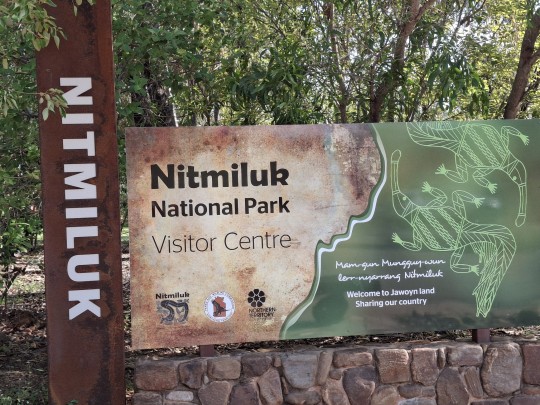
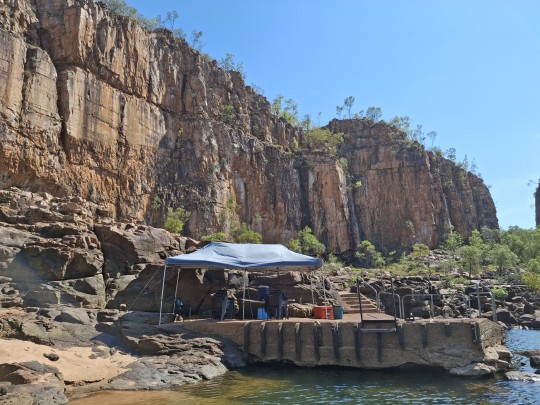


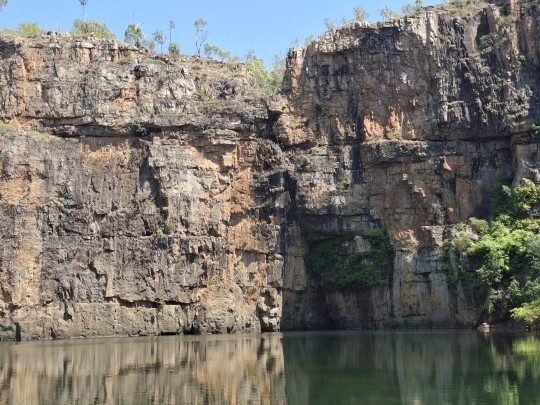





5 notes
·
View notes
Text
Waterfalls, Wildlife, and Wilderness: A Guide to Litchfield National Park
Nestled in the heart of the Northern Territory, just a short drive from Darwin, Litchfield National Park is a true wilderness paradise that offers visitors a remarkable blend of waterfalls, wildlife, and natural beauty. Known for its stunning landscapes, the park is a haven for nature lovers, adventurers, and those seeking a peaceful escape from the hustle and bustle of city life.
From the towering cascades of Wangi Falls to the eerie elegance of the Magnetic Termite Mounds, Litchfield is a place where every corner reveals something unique and awe-inspiring. Whether you’re hiking through lush rainforests, swimming in crystal-clear rockholes, or spotting native wildlife, the park provides endless opportunities for exploration and discovery. Its diverse ecosystems—spanning from wetlands to woodlands—are home to a wide variety of plants and animals, making it a must-visit for wildlife enthusiasts.
In this guide, we’ll take you through the park’s most iconic features, including its breathtaking waterfalls, its fascinating wildlife, and the outdoor adventures that await. We’ll also share practical tips to help you make the most of your visit, ensuring that your trip to Litchfield is as enjoyable and memorable as the park itself. Whether you're a seasoned hiker or a first-time visitor, Litchfield National Park promises an unforgettable experience in one of Australia’s most stunning natural wonders.
Introduction: Discovering Litchfield National Park

Located just a 1.5-hour drive south of Darwin, Litchfield National Park is a true treasure of the Northern Territory, offering visitors an accessible and breathtaking wilderness experience. This 1,500-square-kilometre park is an extraordinary blend of cascading waterfalls, pristine swimming holes, ancient geological formations, and a rich tapestry of wildlife. Whether you’re visiting for a day trip or planning a longer stay, Litchfield presents the perfect opportunity to escape the city and immerse yourself in nature.
Litchfield’s allure lies in its diverse landscapes, where rainforests meet monsoon woodlands and ancient sandstone plateaus. The park is most famous for its stunning waterfalls, which include the iconic Wangi Falls, Florence Falls, and the more remote Tolmer Falls, each offering its own unique charm. Whether you’re hiking to a waterfall viewpoint or cooling off in one of the park’s rockholes, the beauty of Litchfield’s natural wonders is impossible to ignore.
Beyond the waterfalls, Litchfield is home to some fascinating geological features, such as the famous Magnetic Termite Mounds, whose towering structures are aligned with the Earth’s magnetic field. The park’s diverse ecosystems also support a wide variety of native wildlife, including birds, reptiles, and mammals, making it a fantastic destination for wildlife enthusiasts and photographers.
With its abundance of outdoor activities, from hiking and bird watching to swimming and camping, Litchfield offers something for everyone. This guide will take you through the park’s key attractions, practical tips for visiting, and insights into how to make the most of your time in this wilderness wonderland. Whether you're a first-time visitor or a seasoned explorer, Litchfield National Park is a destination that will leave you in awe of nature’s beauty and power.
Breathtaking Waterfalls: Nature's Cascading Beauties
Litchfield National Park is renowned for its stunning waterfalls, which are among the park’s most captivating natural features. With their dramatic falls, crystal-clear pools, and lush surroundings, these waterfalls offer visitors a chance to witness nature’s raw beauty up close. Whether you're swimming in a tranquil rockhole or enjoying a scenic hike, the park’s waterfalls provide some of the most picturesque and memorable experiences in the Northern Territory.
1. Wangi Falls: A Tropical Oasis
One of Litchfield's most popular and accessible waterfalls, Wangi Falls is a true highlight of the park. Situated in a lush monsoon rainforest, the falls drop over 50 meters into a large, crystal-clear pool below, making it the perfect spot for a refreshing swim. The surrounding area is dotted with picnic spots, making it a great place to relax after a dip. There is a well-maintained walking track that leads from the car park to a lookout, offering panoramic views of the falls and the surrounding tropical forest. While the waterfall is especially impressive during the wet season, it flows year-round, providing a peaceful retreat for visitors no matter the time of year.
2. Florence Falls: A Double Cascade in a Pristine Setting
Another must-see waterfall in Litchfield is Florence Falls, a stunning double waterfall that plunges 40 meters into a deep, clear pool. Nestled in a forested gorge, the falls are surrounded by lush vegetation, providing a secluded and serene atmosphere. Florence Falls is easily accessible, with a short, well-marked walking track leading to a viewing platform. For those feeling more adventurous, a longer trail leads down to the base of the falls, where visitors can swim in the cool waters. The rockhole at the base of Florence Falls is a popular spot for swimmers looking to cool off and relax while enjoying the peaceful sound of the cascading water.
3. Tolmer Falls: A Hidden Gem with Stunning Views
Less frequented than Wangi and Florence, Tolmer Falls is one of Litchfield's more dramatic and remote waterfalls. With its 40-meter drop, this waterfall tumbles over rugged cliffs into a deep gorge, surrounded by a unique landscape of rocky escarpments and towering trees. The lookout provides spectacular panoramic views of the falls and the surrounding wilderness. While swimming is not permitted at Tolmer Falls due to the presence of freshwater crocodiles, the views from the lookout are more than enough to make the visit worthwhile. The falls are particularly impressive during the wet season, when they flow with full force, creating a dramatic and powerful spectacle.
4. Tjaynera Falls: The Ultimate Hidden Waterfall Experience
For those seeking a more off-the-beaten-path experience, Tjaynera Falls (also known as Sandy Creek Falls) is a beautiful and remote waterfall located in the park's southern reaches. A 4WD vehicle is required to access the area, making it a great option for those who want to explore Litchfield's quieter corners. Tjaynera Falls cascades into a deep, refreshing pool surrounded by stunning rock formations and dense rainforest. It's an ideal spot for a peaceful swim and a perfect way to experience the more secluded side of Litchfield’s waterfalls.
5. The Wet Season: The Best Time to See Waterfalls in Full Force
While Litchfield’s waterfalls are spectacular year-round, the wet season (November to April) brings out their full glory. During this time, the Top End’s tropical rains feed the falls, making them fuller and more dramatic than during the dry season. The increased water flow creates powerful cascades and vibrant waterholes, offering photographers and nature lovers a chance to capture some truly breathtaking scenes. If you’re visiting during the wet season, be aware that some trails or areas may be closed due to heavy rainfall or flooding, so it’s important to check conditions before you go.
6. Swimming and Safety Considerations
Litchfield’s waterfalls are also popular for swimming, offering visitors the chance to take a dip in some of the cleanest and most refreshing water in the Northern Territory. However, it's important to be mindful of safety. Freshwater crocodiles inhabit some of the park’s waterholes, and while they are generally not aggressive towards humans, it’s crucial to follow all posted warnings and guidelines about safe swimming areas. Always swim in designated, safe spots and heed any advice from park rangers or signage.
Magnetic Termite Mounds and Geological Wonders
Litchfield National Park is not only home to spectacular waterfalls and diverse wildlife, but it also boasts some fascinating geological features, none more iconic than the Magnetic Termite Mounds. These natural marvels, along with other geological wonders in the park, provide a unique insight into the intricate relationship between nature and the environment. Visiting these sites offers a glimpse into the forces that have shaped the region over millions of years.
1. Magnetic Termite Mounds: Nature's Architectural Wonders
One of the most distinctive features of Litchfield National Park are the Magnetic Termite Mounds. These towering, spindly structures, reaching up to 4 meters high, are an extraordinary sight against the backdrop of the park’s landscape. What makes them so unique is the termites' remarkable ability to build their mounds aligned with the Earth’s magnetic field. This alignment helps regulate the temperature inside the mound, protecting the colony from extreme heat and providing a stable environment year-round.
The termites, specifically the Nasutitermes species, construct these mounds with incredible precision. The north-south orientation of the mounds is thought to minimize exposure to the sun during the hottest parts of the day, maximizing shade while allowing for ventilation through the mound’s porous design. This natural engineering feat is a perfect example of how wildlife in the park has adapted to the harsh conditions of the Top End.
A visit to the Magnetic Termite Mound Site near the park’s Loop Road gives you the chance to see these fascinating structures up close. There is an informative boardwalk where visitors can learn more about the mounds and the termites that create them. The mounds are particularly striking at sunrise or sunset, when the soft light casts long shadows, highlighting their unique shapes.
2. Geological Wonders: A Story of Ancient Landscapes
While the Magnetic Termite Mounds are the most famous geological feature in the park, Litchfield is home to a wide array of other geological wonders that offer a glimpse into the region’s ancient past. The park's landscape has been shaped by millions of years of geological processes, including volcanic activity, erosion, and the slow movement of tectonic plates.
The Lost City: One of the park’s most impressive geological formations is the Lost City, a series of ancient sandstone structures that resemble a forgotten stone city. These dramatic, weathered spires and rock formations have been eroded over time, creating towering "cathedrals" and narrow canyons that visitors can explore on foot. The Lost City can be reached via a short hike from the Tabletop Track, which offers a glimpse into the area's rich geological history and provides fantastic photo opportunities.
The Tabletop Range: This range, named for its flat-topped mountains, is another geological highlight. The Tabletop Range forms the southern edge of Litchfield National Park and is characterized by steep cliffs, dramatic escarpments, and expansive views over the surrounding landscape. Hiking the Tabletop Track takes visitors to the summit, where panoramic vistas of the park’s wilderness unfold. The geological history of this area dates back hundreds of millions of years, with the towering rocks offering evidence of ancient processes that shaped the Top End's landscape.
The Buley Rockhole & Surrounding Formations: The rockholes in the park, like Buley Rockhole, are another example of Litchfield's geological wonders. Formed over millions of years through the erosion of sandstone, these smooth, water-carved rock formations are not only scenic but also provide a window into the region's history. As you swim in these natural pools, you’re essentially floating in ancient landscapes shaped by time and natural forces.
3. The Role of Water in Shaping Litchfield's Geology
Water plays a pivotal role in the park’s geological landscape. The region’s tropical climate, with its seasonal rains and dry spells, has influenced the erosion processes that have carved out the park’s gorges, waterfalls, and rockholes. The constant flow of water has worn down the once-mighty sandstone formations, leaving behind the dramatic cliffs and rockholes that are so characteristic of Litchfield today.
The wet season, in particular, has a profound impact on Litchfield's geology. As torrents of rain flood the park, they reshape the landscape, altering rock formations and carving new channels. Over time, these natural processes create the beautiful and varied geological features that make Litchfield National Park such a captivating destination for visitors.
4. Preserving Litchfield’s Geological Heritage
Like many natural landmarks, Litchfield's geological wonders are both fragile and irreplaceable. The park’s diverse landscape—ranging from magnetic termite mounds to towering rock formations—has been millions of years in the making. To preserve these natural wonders, it's important for visitors to follow designated paths, avoid disturbing wildlife, and adhere to park regulations. By respecting the environment, we help ensure that future generations can continue to experience Litchfield’s geological marvels.
Flora and Fauna: A Rich Tapestry of Wildlife

Litchfield National Park is a haven for nature enthusiasts, offering a vibrant tapestry of flora and fauna that thrives in the unique Top End environment. With its diverse ecosystems—ranging from monsoon rainforests to open woodlands, wetlands, and rock escarpments—the park supports an impressive variety of plant and animal life. Exploring Litchfield is like stepping into an ever-changing world, where lush vegetation and fascinating wildlife intersect, providing endless opportunities for discovery.
1. Flora: A Diverse Ecosystem of Plants
Litchfield’s diverse landscape is reflected in the richness of its plant life. The park is home to a mix of tropical rainforests, woodlands, and wetlands, with each habitat supporting a unique set of plants. The region’s tropical climate creates a vibrant palette of greens, with towering trees, dense undergrowth, and colorful flowering plants.
Monsoon Rainforests: In areas like the Wangi Falls and Florence Falls, the monsoon rainforest thrives, with towering trees like river gums and pandanus palms, as well as a variety of ferns and vines. These rainforests are incredibly rich in biodiversity, offering a sanctuary for both plant and animal life. The dense foliage provides a cool respite from the heat, while the towering trees create a lush, shaded canopy.
Woodlands and Savannas: On the park’s open plains and higher ground, you’ll find eucalypt forests and savanna woodlands. These areas are home to the iconic stringybark trees and a variety of bush foods, like bush tomatoes and bush bananas, which have been used for millennia by Indigenous peoples of the region. In these more open areas, the ground is often covered in a blanket of grasses and wildflowers that bloom spectacularly during the wet season.
Wetlands: The wetlands, which are most prominent during the wet season, provide an essential habitat for a range of species. The waterlogged areas foster the growth of aquatic plants like water lilies and sedges, and are teeming with life, from fish to insects and birds.
2. Fauna: A Diverse Array of Wildlife
Litchfield National Park is a haven for wildlife, with over 250 species of birds, a wide variety of reptiles, and numerous mammals and amphibians calling the park home. The park’s rich and varied ecosystems provide ample opportunities for wildlife sightings, making it a paradise for birdwatchers and wildlife photographers.
Birdlife: Litchfield is a birdwatcher’s dream, with a staggering diversity of species. From the majestic black kites soaring over the park to the colorful rainbow bee-eaters darting through the sky, there’s no shortage of avian activity. Other notable species include the yellow-throated miner, red-winged parrot, and the elusive sandstone shrike-thrush, which is endemic to the region. The wetlands around Wangi Falls and Tolmer Falls are particularly good spots for birdwatching, where you can see waterfowl like magpie geese and whistling kites.
Mammals: While many of the mammals in Litchfield are elusive, the park is home to several species that thrive in its unique environments. Rock wallabies, often spotted hopping along the cliffs around Tolmer Falls, are a highlight for visitors. The northern brown bandicoot, brushtail possums, and flying foxes also make their homes in the park. While crocodiles are the more infamous residents of the park, wallabies and bats are more commonly spotted by visitors.
Reptiles and Amphibians: Litchfield’s warm climate and diverse habitats make it an ideal home for a variety of reptiles and amphibians. Visitors may encounter frilled-neck lizards basking on rocks, blue-tongue skinks scurrying through the underbrush, and the occasional perentie, Australia’s second-largest lizard. The park is also home to several species of frogs, particularly in the wetter months when the rockholes and rainforests are teeming with life. Freshwater crocodiles are found in many of the park’s waterholes, although they are generally shy and prefer to avoid human contact.
Insects and Other Creatures: In addition to its larger wildlife, Litchfield is home to an extraordinary range of insects, from colorful butterflies like the rainbow swallowtail to the iconic bull ants. The park’s abundant flowering plants attract a variety of bees, while the wet season brings an explosion of life in the form of mosquitoes, dragonflies, and other insects that contribute to the park’s vibrant ecosystem.
3. The Wet vs. Dry Season: A Changing Landscape of Wildlife
Litchfield’s wildlife is deeply influenced by the changing seasons. The wet season (November to April) brings heavy rainfall and transforms the park’s environment. Wetlands and rockholes fill up, attracting migratory birds and amphibians. The abundance of food and water in the wet season also brings out more active wildlife, from reptiles basking in the sun to insects and frogs calling in the evenings. However, some tracks and areas may be closed during this time due to flooding or muddy conditions.
The dry season (May to October), on the other hand, is characterized by less rainfall and clearer skies, making it a great time for hiking and exploring the park. During the dry months, many animals move into more concentrated areas around waterholes, making wildlife sightings more predictable. The park’s flora also changes with the seasons, with the dry season bringing clearer skies and an opportunity to witness the transition from lush rainforests to drier woodland environments.
4. Conservation and Responsible Wildlife Watching
While Litchfield National Park is a wildlife paradise, it is important to approach it with respect. Many of the species found in the park are vulnerable or endangered, and their habitat requires protection. Visitors should be mindful of their surroundings, adhere to park guidelines, and avoid disturbing animals, particularly the freshwater crocodiles. It’s important to stick to designated paths and swimming areas to ensure both personal safety and the preservation of the park’s delicate ecosystems.
Outdoor Adventures: Trails, Swimming Holes, and More
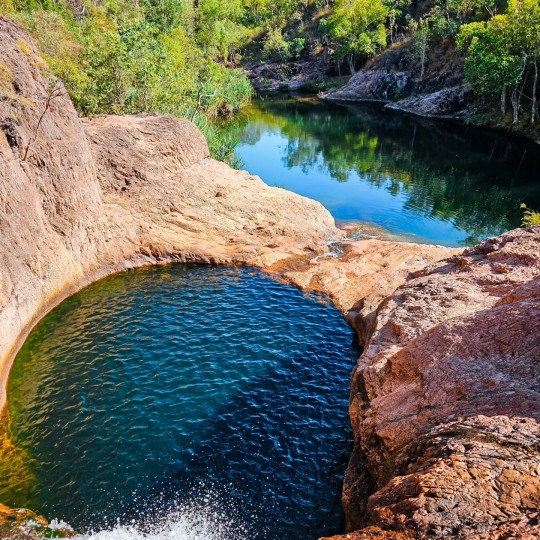
Litchfield National Park is a playground for outdoor enthusiasts, offering a range of activities that allow visitors to fully immerse themselves in its natural beauty. Whether you’re an avid hiker, a wildlife watcher, or someone looking to relax in a crystal-clear swimming hole, Litchfield has something for every type of explorer. From easy walks to more challenging hikes, the park’s diverse landscapes provide endless opportunities for adventure.
1. Hiking Trails: Exploring Litchfield on Foot
Litchfield is home to a variety of hiking trails, each offering a different way to experience the park’s natural wonders. Whether you’re seeking short, leisurely strolls or more challenging treks, the park’s trails offer something for all levels of fitness and adventure.
Florence Falls Walk: One of the most popular and accessible trails in the park, this short (1.1 km) return walk takes you through the monsoon rainforest to a lookout with breathtaking views of Florence Falls. For a more adventurous option, continue down the stairs to the base of the falls, where you can swim in the clear pool at the bottom. This trail is perfect for families or those looking for a leisurely stroll through lush rainforest.
Wangi Falls Walk: A 1.6 km loop trail that winds through the tropical forest, the Wangi Falls Walk offers a scenic route to the falls, passing through beautiful vegetation and providing an excellent opportunity to spot wildlife along the way. The path leads to a viewing platform where you can marvel at the falls and the surrounding landscapes. It's also a great way to access the swimming hole below the falls.
Tabletop Track: For those seeking a more challenging hike, the Tabletop Track offers a 39 km circuit that takes you across the park’s rugged terrain, including stunning sandstone escarpments, panoramic views, and the Lost City rock formations. This multi-day hike offers an immersive experience, ideal for seasoned trekkers who want to explore the park’s diverse ecosystems and geological features. Camping options are available along the trail, giving you the chance to fully embrace the wilderness of Litchfield.
Buley Rockhole to Florence Falls Walk: This 3.5 km walk links the Buley Rockhole with Florence Falls, offering hikers an excellent chance to see some of Litchfield’s most iconic spots while exploring the area’s diverse habitats. The trail is well-maintained and relatively easy, making it a perfect half-day hike for those who want to experience both the beauty of rockholes and waterfalls.
2. Swimming Holes: Cool Off in Nature’s Pools
Litchfield is famous for its natural swimming holes, which provide the perfect way to cool off after a hike or simply to relax and enjoy the surroundings. The park’s crystal-clear waters are an invitation to dive in and experience the refreshing beauty of the Top End’s natural pools.
Wangi Falls: The large swimming pool at the base of Wangi Falls is one of the most popular spots in the park. Surrounded by lush rainforest, the pool is safe for swimming year-round (though be sure to check for any seasonal safety warnings related to crocodiles). The clear, cool water provides a perfect way to cool off after a hike or a long day of exploration.
Florence Falls: The stunning rockholes at the base of Florence Falls offer a serene swimming experience surrounded by nature. The water is refreshingly cool, and the setting—surrounded by rainforest and rock formations—adds to the sense of tranquility. Though this is a popular spot, the relatively large pool allows for a relaxing swim, and visitors can enjoy the sound of the cascading water as they float in the peaceful environment.
Buley Rockhole: Located near Florence Falls, Buley Rockhole is a series of smaller pools formed by the cascading waters of a creek. The water is crystal clear, and the varying depths of the pools make it a great spot for both leisurely dips and a bit of fun rock-hopping. This spot is perfect for families or anyone looking to enjoy a less crowded, more intimate swimming experience.
Tjaynera Falls: For a more secluded swimming experience, Tjaynera Falls (also known as Sandy Creek Falls) is a hidden gem in the park. Accessible by 4WD, this remote spot offers a refreshing swim in a peaceful setting. The falls create a lovely rockpool that is ideal for relaxing, and the surrounding rainforest provides plenty of shade and a sense of tranquility.
3. Wildlife Watching: A Natural Habitat for Nature Lovers
Litchfield is a great destination for wildlife enthusiasts, offering countless opportunities to spot native animals in their natural habitats. The park’s diverse ecosystems provide homes for a range of species, from birds and reptiles to mammals and amphibians.
Bird Watching: With over 250 species of birds, Litchfield is a paradise for birdwatchers. Keep your eyes peeled for species such as the red-winged parrot, white-bellied sea eagle, and sandstone shrike-thrush. The park’s wetlands, like those around Wangi Falls and Tolmer Falls, are excellent birdwatching hotspots, especially during the wet season when migratory birds arrive in large numbers.
Reptiles and Mammals: Reptiles like the frilled-neck lizard, blue-tongue skink, and perentie (Australia’s second-largest lizard) are often spotted sunbathing on rocks or darting through the underbrush. For mammal lovers, the park is home to rock wallabies, northern brown bandicoots, and the occasional flying fox. These animals are most active early in the morning and late in the afternoon, so be sure to time your wildlife watching accordingly.
Freshwater Crocodiles: While they are generally shy and pose little threat to humans, freshwater crocodiles are a common sight in Litchfield’s rockholes and waterfalls. Visitors are encouraged to follow all safety guidelines and signs to ensure they stay safe while enjoying the park’s waterways.
4. Camping and Picnicking: Enjoy Nature Overnight
For those who want to fully immerse themselves in the beauty of Litchfield, the park offers several camping areas where you can spend the night under the stars. Wangi Falls and Florence Falls both have well-equipped campgrounds with facilities, allowing visitors to enjoy the serenity of the park after the day-trippers have left. The sound of waterfalls and the rustle of the wind through the trees create a peaceful backdrop for camping.
For those who prefer a day trip, picnic areas near Wangi Falls, Buley Rockhole, and Florence Falls provide great spots to relax, enjoy a meal, and take in the surrounding views. These areas are well-shaded, with picnic tables, BBQs, and designated walking tracks to further explore the nearby attractions.
Practical Tips for Visiting Litchfield National Park
Litchfield National Park is a stunning and easily accessible destination that offers a wealth of natural beauty and outdoor adventures. To make the most of your visit and ensure a safe and enjoyable experience, here are some practical tips to help you prepare for your trip to this natural wonderland.
1. Best Time to Visit: The Dry Season
The best time to visit Litchfield National Park is during the dry season (May to October), when the weather is sunny and warm, with less rainfall and cooler temperatures. During this time, the park’s trails are more accessible, the waterfalls and swimming holes are in full flow, and wildlife is more active. The wet season (November to April) can bring heavy rainfall and flooding, which may cause certain areas to be inaccessible. However, the wet season also offers a unique chance to see the park's waterfalls at their most powerful and dramatic.
2. Getting There: Easy Access from Darwin
Litchfield National Park is located about 90 km south of Darwin, making it an ideal day trip or weekend getaway. The park is easily accessible by car, with the drive taking approximately 1.5 hours from Darwin. The roads are well-maintained, but it’s important to note that during the wet season, some roads (particularly those leading to remote areas like Tjaynera Falls) may become impassable due to flooding, so it’s always a good idea to check road conditions before you travel.
For visitors without a car, there are also guided tours available from Darwin, which can be a great way to explore the park’s main attractions, such as Wangi Falls, Florence Falls, and the Magnetic Termite Mounds, with the added bonus of a knowledgeable guide.
3. What to Bring: Pack Smart for Comfort and Safety
To ensure a comfortable and enjoyable visit to Litchfield National Park, packing the right gear is essential. Here’s a list of recommended items to bring:
Sturdy Footwear: Most of Litchfield’s trails are relatively easy, but some involve uneven terrain, so it’s important to wear comfortable, sturdy hiking boots or shoes with good grip, especially for waterfall hikes and rockholes.
Swimwear and Towel: Don’t forget your swimwear and a towel if you plan to take a refreshing dip in the park’s famous swimming holes. Always check water safety guidelines regarding crocodile risks in specific areas.
Water: It’s important to stay hydrated, particularly in the warm weather. Bring plenty of water, especially if you plan to hike or explore the park’s more remote areas.
Sun Protection: The Top End sun can be intense, so pack a wide-brimmed hat, sunglasses, sunscreen (SPF 30+), and light, long-sleeve clothing to protect yourself from the sun.
Insect Repellent: Mosquitoes and other insects are common in the park, especially during the wet season. Bring a good insect repellent to avoid bites, and consider wearing long pants and sleeves when hiking in the rainforests or near waterholes.
Camera and Binoculars: Litchfield is a photographer’s paradise, with stunning waterfalls, wildlife, and landscapes around every corner. Don’t forget your camera or phone to capture the beauty of the park. Binoculars are also a great addition for birdwatching and wildlife spotting.
4. Safety Tips: Stay Safe in the Wilderness
While Litchfield is generally a safe and family-friendly destination, it’s important to take safety precautions while exploring its natural beauty. Here are some essential tips:
Swimming Safety: Always swim in designated swimming areas. Some areas, like Wangi Falls and Florence Falls, are safe for swimming, but other areas may have crocodiles or strong currents. Be sure to check local safety signs and guidelines, especially if you’re visiting during the wet season.
Crocodile Awareness: Freshwater crocodiles are found in many of Litchfield’s rockholes and waterways, but they are generally shy and pose little threat to humans. However, always be cautious near the water’s edge and follow all safety signs regarding crocodile risks. Do not swim in areas where crocodiles are known to inhabit.
Weather Conditions: The weather in Litchfield can change quickly, especially during the wet season. If you’re hiking, be prepared for sudden rain showers and know that some trails may become slippery or flooded. Always check the weather forecast before heading out and be prepared to turn back if conditions become unsafe.
Wildlife Respect: Keep a safe distance from wildlife, particularly reptiles and birds. Avoid feeding animals, as this can disrupt their natural behavior. If you encounter a rock wallaby or other mammals, observe them from a distance to avoid stressing the animals.
First Aid Kit: Carry a basic first aid kit, especially if you plan on hiking or swimming in remote areas. It’s also a good idea to have a map of the park and a fully charged phone in case of emergencies.
5. Camping and Accommodation
If you’re planning to spend more time in Litchfield National Park, there are several campgrounds within the park, including at Wangi Falls, Florence Falls, and Buley Rockhole. These campgrounds are equipped with basic amenities such as toilets, picnic tables, and barbecues. Some campgrounds also have designated powered sites for those with caravans or campervans. It’s advisable to book a campsite in advance, particularly during peak tourist season, as the campsites can fill up quickly.
For those seeking more comfort, there are a number of accommodation options just outside the park, including cabins, lodges, and hotels in nearby towns like Batchelor and Darwin.
6. Park Entry and Fees
Litchfield National Park is free to enter, which makes it an accessible and affordable destination for all types of travelers. However, some areas within the park, such as campgrounds and the Tjaynera Falls, may require a small fee or a permit. It’s always a good idea to check the Northern Territory Parks and Wildlife website or ask at the visitor center for up-to-date information about any fees or seasonal closures.
7. Respect the Environment
As with any national park, it’s important to leave no trace when exploring Litchfield. Follow the park’s rules and guidelines, stay on marked paths, and dispose of rubbish in designated bins. Respect the park’s unique flora and fauna, and avoid disturbing wildlife. Protecting this stunning natural environment ensures that future generations can continue to enjoy the beauty of Litchfield National Park.
Conclusion: A Must-Visit Natural Paradise
Litchfield National Park is an extraordinary destination that embodies the best of Northern Australia's natural beauty, offering visitors a unique blend of towering waterfalls, diverse wildlife, and untouched wilderness. Whether you're seeking adventure through hiking and swimming or simply wanting to relax amidst breathtaking landscapes, Litchfield provides a wealth of experiences that appeal to nature lovers, adventure seekers, and families alike. Its proximity to Darwin makes it an easily accessible getaway, and the park’s well-maintained trails, stunning rockholes, and tranquil environment make it a must-visit for anyone looking to connect with the wild beauty of the Top End. From the cascading waterfalls to the vibrant ecosystems and fascinating geological features, Litchfield National Park promises an unforgettable adventure in one of Australia's most picturesque and pristine wilderness areas.
Conclusion
Litchfield National Park is a captivating destination that showcases the diverse beauty of Northern Australia’s landscapes. From its awe-inspiring waterfalls to its thriving ecosystems and fascinating geological features, the park offers an abundance of natural wonders that are sure to leave a lasting impression. Whether you're exploring on foot, swimming in its pristine rockholes, or simply soaking in the tranquility of the wilderness, Litchfield offers something for every type of adventurer. Its proximity to Darwin makes it an easy and accessible escape, yet its natural beauty feels worlds away from the hustle and bustle of city life. For those seeking an authentic experience in Australia’s wild heart, Litchfield National Park is an unmissable destination—one that promises adventure, relaxation, and a deep connection with the natural world.
#kakadu tour#kakadu tours from darwin#kakadu national park tours#2 day kakadu tours from darwin#yellow water cruise kakadu#kakadu national park tours from darwin#kakadu trips#yellow river cruise kakadu#kakadu tours and travel#jim jim falls tours kakadu#litchfield np#katherine gorge#eco-friendly tours#aboriginal cultural experiences#indigenous heritage tours#outback adventure safaris#environmental conservation tours
0 notes
Text
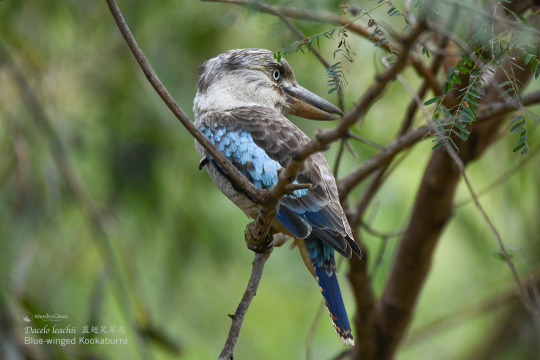
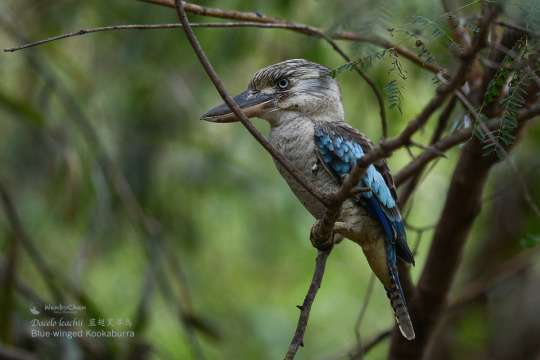
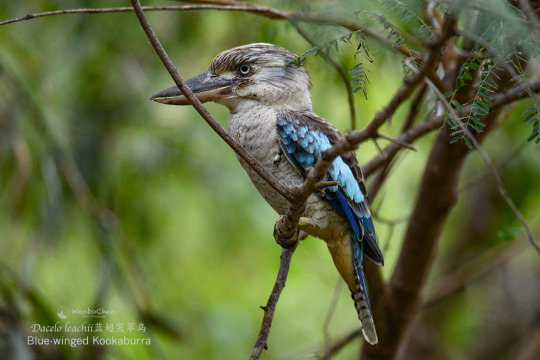
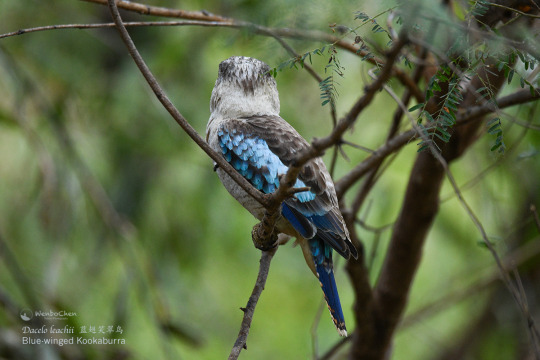
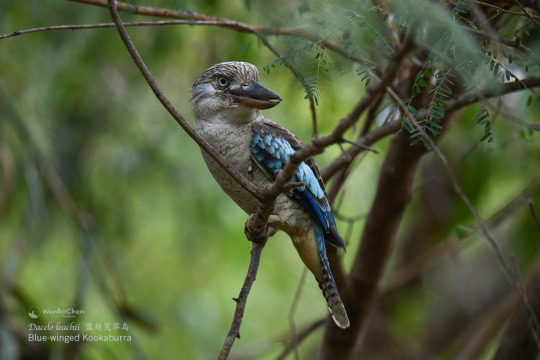
It's easy to distinguish the Blue-winged Kookaburra from the Laughing Kookaburra from the south, for the dazzling blue feathers are unforgettable. This is a male one in the Katherine Gorge of the Northern Territory.
42 notes
·
View notes
Text

Keleigh Teller looking gorge as ever via Katherine Espinosa's insta stories | August 15th 2023
10 notes
·
View notes
Note
Of the times we see a vampire without humanity, which one did you find most convincing? Including when they "become themselves again." I feel like Stefan is the only one who pulls it off and I really liked the part where Katherine tells him that their humanity would always catch on because I feel like it tells us more about Stefan as a character and s their struggles than simply being world-building.
well i've maintained that stefan is the most vampiric vampire on tvd:
another reason why i like stefan as a character is because he’s as close to being a vampire as possible, from the blood to the conflict/inner-turmoil i.e. struggling with being a vampire and I don’t think a “humanity switch” is necessary for that struggle.
Yep! Stefan is actually the only who felt like a legitimate vampire
Well as I’ve said in the past, I don’t think TVD gets vampires right because I don’t think TVD treats vampires like they’re non-human, like they’re supernatural, I think they treat vampires like they’re humans who happen to drink blood. I never understood what it was about being a vampire that made most of the characters on the show miss humanity with the exception of Stefan because he was a ripper and as a ripper he kept killing people because he couldn’t stop gorging on blood. But everyone else? Especially in the later seasons where they barely compel, they don’t use their speed, they don’t even drink blood anymore, are those the only distinctions between humans and vampires? Even the time jump in season 7, three years? That’s a blink for a vampire who is going to live for eternity, that’s nothing, but it’s considered a long time and a dick move in the series because it’s still being treated as if these people are human.
Stefan.
so i think he's the best at portraying anything involving vampirism
6 notes
·
View notes
Text
Katherine had the best period of outfits in tvdu!!! Gorg





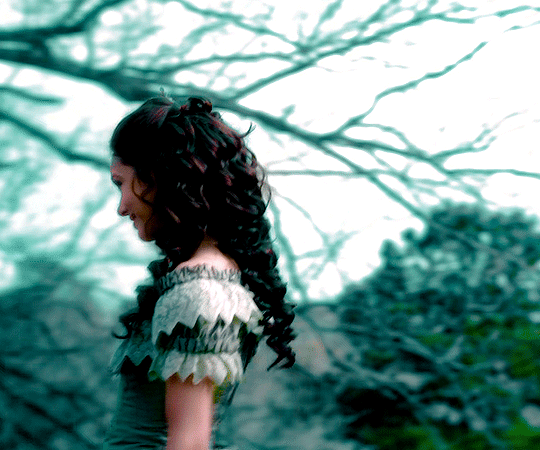

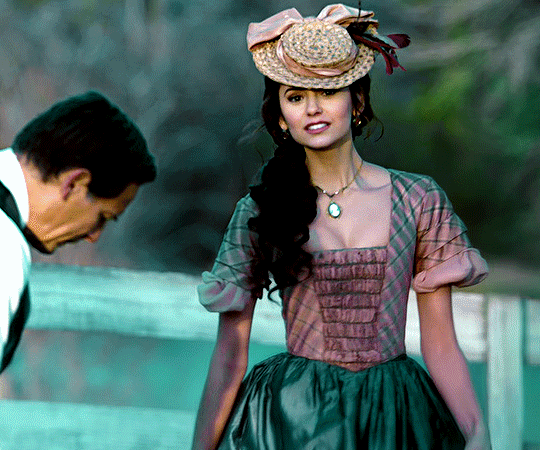


Katherine Pierce in Season 1, episode 13: Children of the Damned
2K notes
·
View notes
Text
RETURN TO ALICE SPRINGS & TRAVEL TO DARWIN 14 & 15 April 2025
On the morning of 14th April we travelled from Yulara towards Alice Springs in order to catch the Ghan train to Darwin. We stopped for a break at the viewpoint for Mount Conner ( see earlier post) and this time crossed the road for a view of salt flats:

We stopped again for a quick lunch and after eating, visited some emus in a paddock:

We reached Alice Springs by mid afternoon and went straight to the Ghan terminal. The train was in the station. Here is the locomotive:

The original railway track was built by immigrant workers and it is thought that the train’s name came from the Afghan contingent. In the station a commemorative plaque and statue are in place to mark the inaugural passenger train in 1980:

We boarded the train to have dinner. We slept on the train overnight and had a better night’s sleep compared with the last train journey as the track between Alice Springs and Darwin has been renewed giving a much smoother journey, compared to Adelaide to Alice Springs.
On the 15th April, the train stopped around 9am in Katherine. We went on a trip from the train to Nitmiluk Gorge. We were then taken on a boat trip:

At the start of the boat trip, the river banks were very green. The river level was high given the recent heavy rain in the region:

However, the scenery changed to show more rock face:

The scenery was dramatic:

The boat turned around at some rapids as clearly we could go no further:

By the banks of the river as we left the boat, we saw lots of bats hanging in trees:

After returning to the train, it proceeded to Darwin. We were picked up from the Darwin Ghan Station late afternoon and we were taken to our hotel for the night.
0 notes